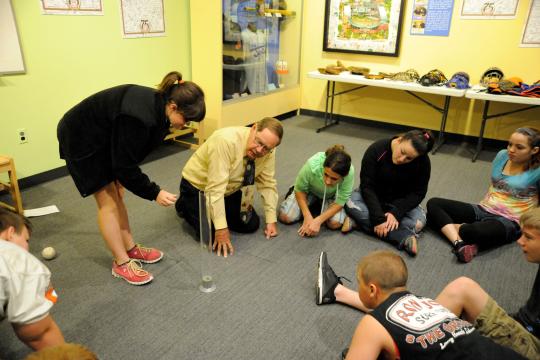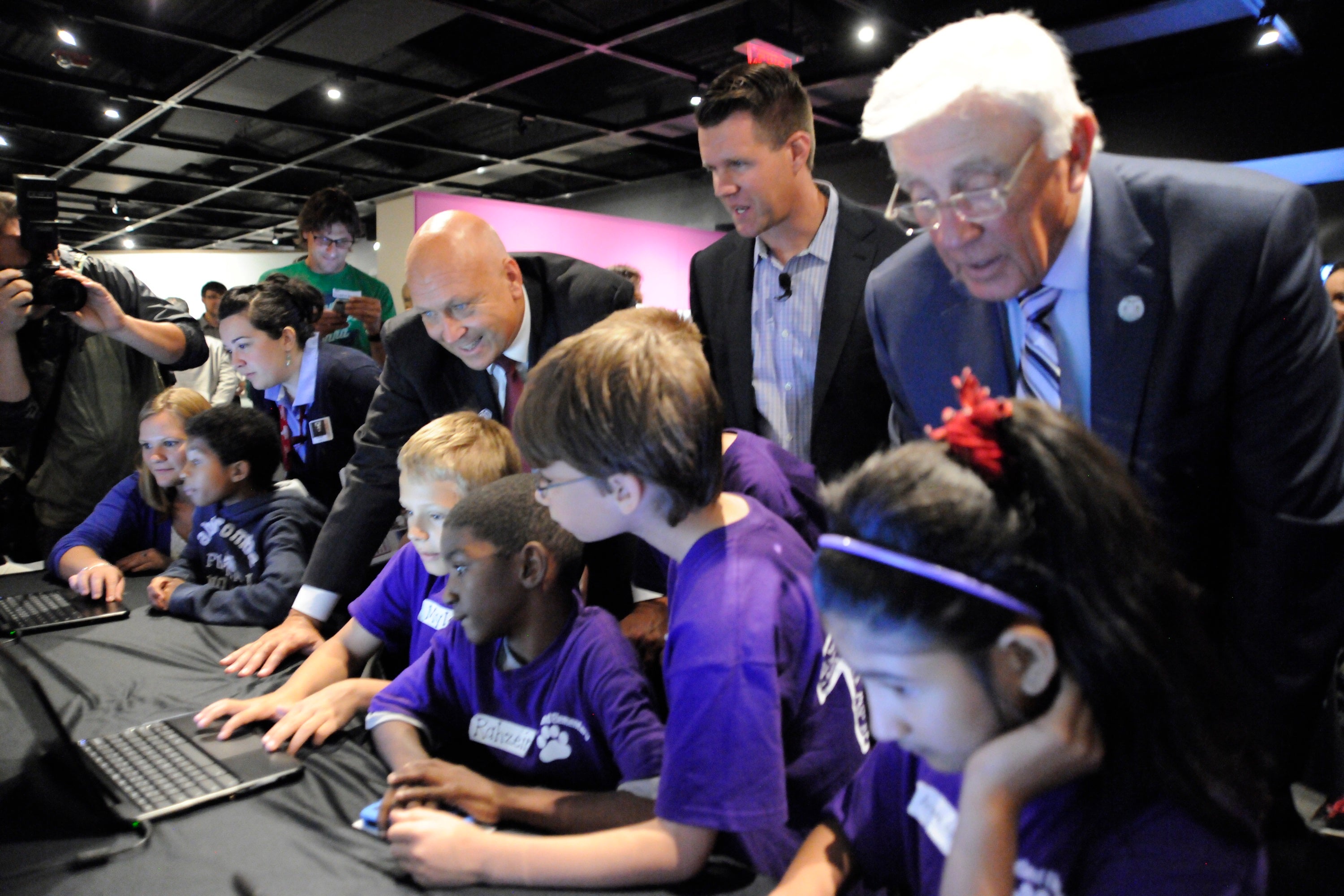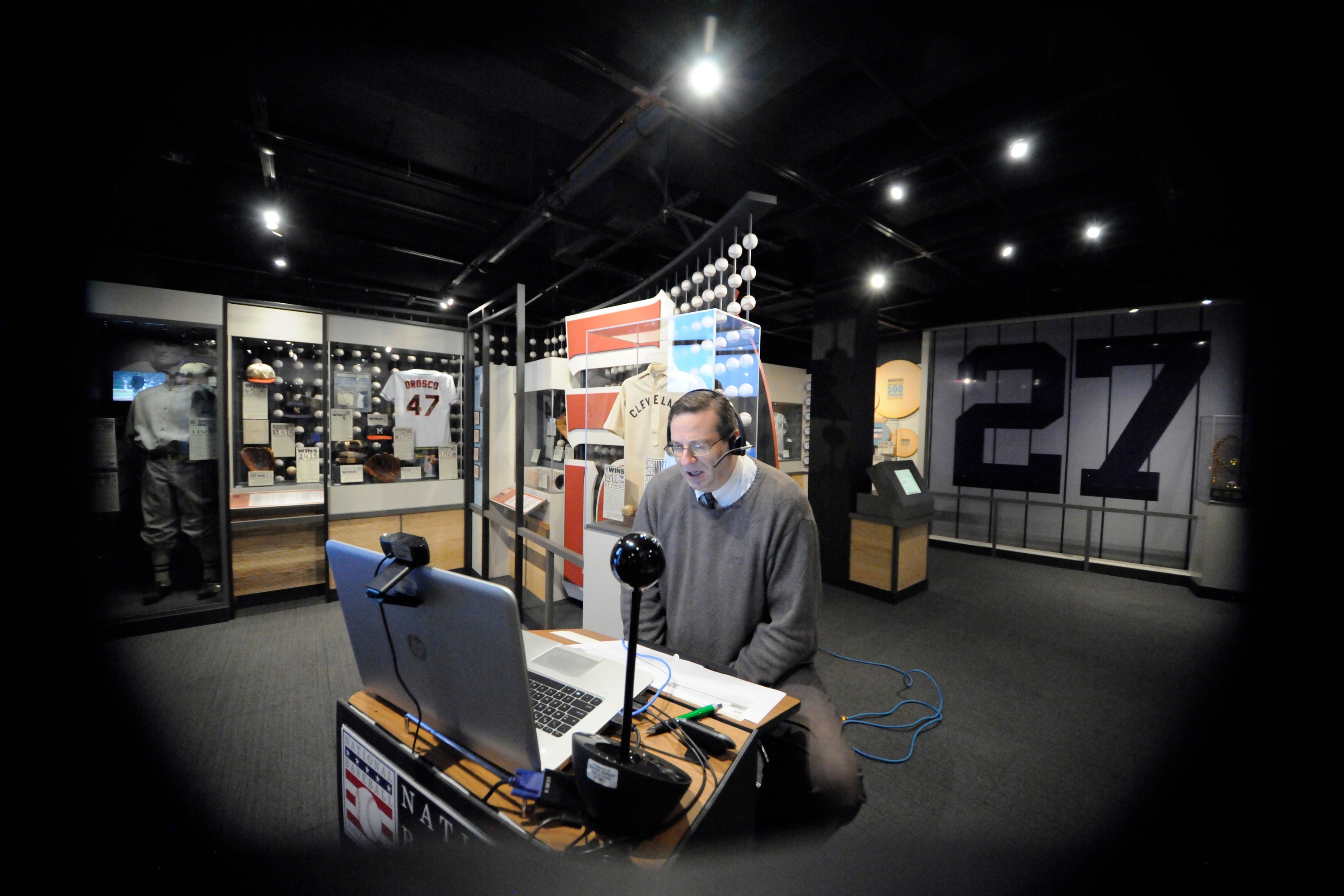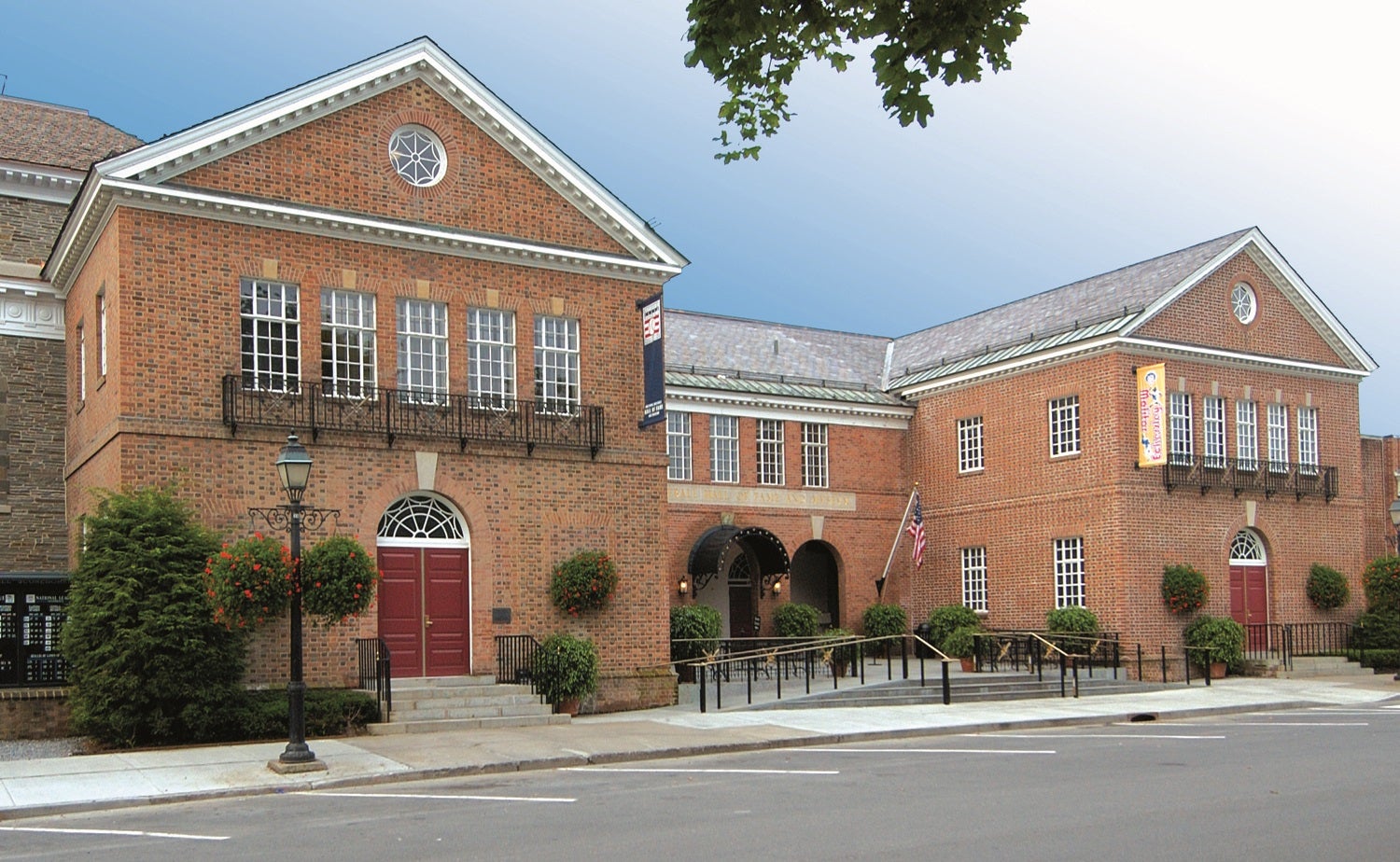- Home
- Our Stories
- Museum teachers keep pace with new education climate
Museum teachers keep pace with new education climate
On a chilly April morning in Cooperstown, a large group of eighth-grade students from Duanesburg Central School has gathered in the Hall of Fame’s Plaque Gallery.
“This is the coolest room!” shouts one of the students. But Richard Payne, a museum teacher at the Hall of Fame, quickly leads the group past the plaques and into the Museum’s first floor. Though the Gallery is one of the Hall’s most famous wings, there will be plenty of time for that later. Payne knows there is a wealth of knowledge – and valuable lessons – waiting to be discovered elsewhere.
The Duanesburg students are one of hundreds of school groups, from kindergarteners to seniors, who visit Cooperstown each year for the Hall of Fame’s educational tours. Museum teachers like Payne, who has worked at the Hall for more than 11 years, lead students on a two-and-half hour tour of all three floors of the Museum while fostering discussions involving the connection between baseball and American history along the way.
Payne’s group makes its way to the Museum’s Diamond Dreams exhibit on the second floor, where Payne conducts his first lesson on the roles of women in baseball history. As the students try on 19th-century bloomers and dress uniforms made famous in the movie A League of Their Own, Payne asks the students to discuss how society views women in athletics.
“So, has the expectation changed?” he asks them. “When a girl gets too old for Little League, what is she expected to play? Softball? Why is that?”
School at the Hall
In one respect, the trip to Cooperstown is a fun field trip and a morning off from school. But Payne, who taught science classes in the Cobleskill (N.Y.) Central School district for 40 years before working in Cooperstown, says one of his goals is to touch upon each of the 13 educational modules that the Hall’s education staff has drawn up to align with schools’ common core programs.
“Most people might think we just let kids run loose, but really we’re trying to sneak in some important education and information,” he says.
As the tour continues through the Museum’s Pride and Passion exhibit, Payne invokes science by explaining how melanin levels are the only difference between the skin of white and African-American ballplayers. He constantly asks the students questions to hold their attention, and says creating a two-way dialogue is critical.
“I think that’s the key to teaching, is to be able to spot some things that kids are interested in and try to build on them,” he says. “You can’t just go with your program script. If you do, you’re dead in the water.”
Go the Distance
As Payne discusses the historic records of baseball on the third floor, the group passes by Bruce Markusen, the Museum’s Manager of Digital and Outreach Learning, who is conducting his own lesson with students from the Friends Select School in Philadelphia, Pa. Markusen is speaking to the students via webcam as part of the Museum’s distance learning program, which enables schools to receive a similar educational experience from the Museum without having to leave the classroom.
School groups who choose distance learning often sign up for a series ranging anywhere from three to six separate lessons that touch upon different learning modules that align with common core standards. Markusen said the most popular modules are Civil Rights and Math, while new modules – including an American history lesson told through various baseball uniform changes, and a virtual tour that explains the artifact accessions and Hall of Fame voting processes – are gaining interest.
“Video conferencing offers a more in-depth program,” said Markusen, who added that module-based lessons can last up to an hour during distance learning sessions. “We’re able to use modern technology, and I think kids are always fascinated by that.
“It allows us to connect us with schools all over the country, and even international schools,” he added. “We did a program with a school from Mexico just this past winter.”
You can learn more about the Museum’s distance learning programs here.
After completing the third floor, Payne leads the students back downstairs to the Museum’s Learning Center. The eighth-graders, who were reserved through much of the tour, come alive when they get the chance to try on baseball equipment from the different eras of the game.
“(The Learning Center) gives kids a chance to touch things, to explore and ask questions,” Payne explains. “In my science classes at Cobleskill, I always had my students touching things and doing things, and so it’s really important for students to be able to handle the baseball equipment and try it on. It personalizes the experience more for them.”
As kids become even more comfortable with digital technology and the ability to access any information with a few swipes on their smartphones, Payne believes tangible and interactive experiences like distance learning video chats and the Learning Center are more critical than ever.
“I don’t think I’ve changed as a teacher as much as trying to keep up and keep current with what’s happening in the world,” he says. “For me, it’s still about seeing the smiles on the kids’ faces and seeing the ‘a-ha’ moment when they get something.”
Matt Kelly is the communications specialist at the National Baseball Hall of Fame and Museum







